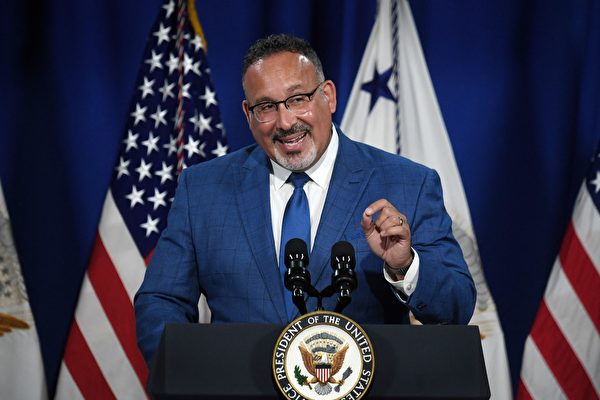The Biden administration is advancing a new approach to cancel student loans for Americans who are facing huge medical expenses, childcare costs, and other economic hardships that make it difficult for them to repay their loans.
This proposal, announced on Friday, marks President Joe Biden’s third attempt to cancel student loans in the face of repeated legal challenges from Republican-led states. His first plan was rejected by the Supreme Court last year, and the second plan was temporarily halted by a federal judge in Missouri.
Before the new regulation can take effect, it must overcome a series of obstacles, and it is still unclear whether it can be implemented within the three months before Biden leaves office. Like other loan forgiveness proposals from Biden, it may face challenges from conservative groups who argue that it is unconstitutional and unfair.
If ultimately approved, the new regulation would allow the Department of Education to proactively cancel borrowers’ loans if the institution determines that the borrower has an 80% chance of defaulting on the loan in the next two years. Others can apply for review to determine if they meet the cancellation criteria.
This move aims to assist borrowers who are unlikely to repay their loans. The Education Department estimates that approximately 8 million Americans meet the cancellation criteria.
Education Secretary Miguel Cardona stated, “Borrowers have experienced heartbreaking economic devastation, but for too long, our flawed student loan system made it difficult for them to receive relief, and that’s simply not right.”
The eligible individuals, according to the Education Department, include those facing unexpected medical expenses, high childcare costs, significant expenses caring for chronically ill family members, and those who have faced economic hardship following natural disasters.
Virginia Foxx, chair of the North Carolina House Committee on Education and Labor, called it a “false plan” aimed at appeasing voters before the presidential election.
Foxx stated in a release, “This is the government’s latest blatant attempt to bribe voters and a sign of desperation. It’s a missed opportunity to address the issue of college costs without meaningful, lasting reform.”
According to the proposal, the Education Department can use a series of indicators to assess whether someone is likely to default on a loan. These indicators include household income, age, receipt of public benefits, total debt (not just student loans), and other hardship indicators determined by the Secretary.
Defaulting on a loan within approximately nine months is typically considered a loan default. Cardona mentioned that about 1 million borrowers default each year, and the new regulation will prevent the Education Department from attempting to collect funds that are unlikely to be recovered.
Cardona explained in a phone interview with reporters, “Servicing and collecting on defaulted loans is not free; it costs taxpayers money, and trying to collect on defaulted loans is sometimes not cost-effective.”
The proposal will enter a 30-day public comment period before formal implementation. The plan is set to be finalized in 2025. With less than two weeks until the November 5th presidential election, the future of the proposal remains uncertain.
Democratic candidate and Vice President Kamala Harris has not detailed how she would cancel student debt if she wins the presidential election. Republican candidate and former President Donald Trump called Biden’s debt cancellation proposal unfair and illegal.
Biden’s latest proposal is a result of the federal rules process with input from experts in higher education. Advocates of the proposal strongly argue for the establishment of a “hardship provision,” citing that too many borrowers are trapped in debt they can never repay.
The Biden administration states that under the Higher Education Act, the Education Secretary has the authority to forgive debt in certain circumstances. It also points out that other federal agencies often forgive owed debt, considering factors like “conscience” and fairness.
When Biden made his second attempt to forgive student loans, he also used similar legal arguments, proposing relief for groups of borrowers with higher interest amounts and longer loan durations. A federal judge in Missouri halted the plan after legal challenges from Republican-led states.
During the legal battle, the Biden administration is increasingly focusing on using existing programs to cancel student loans, including programs for public service workers. The government states that around $175 billion in loans for approximately 5 million borrowers have been canceled so far.
The “hardship provision” was initially discussed as part of the second attempt plan, which is currently halted in Missouri. However, the Education Department has broken it down into its own proposal to spend more time studying the details.
(Adapted from a report by the Associated Press)

